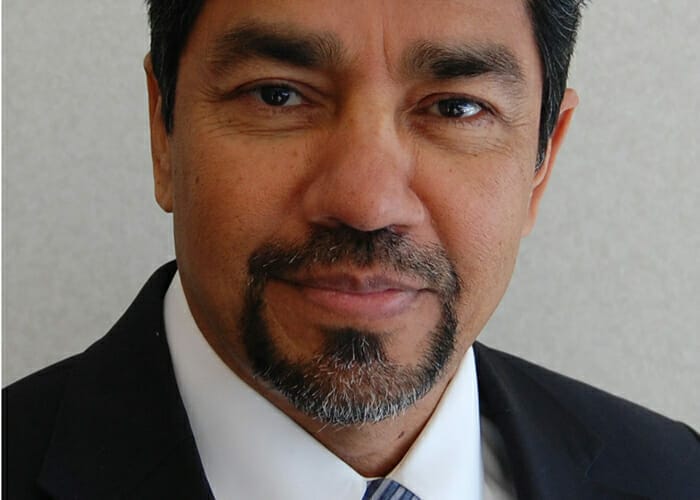We believe the standard tools of economics, and the risk methods derived from them, are not going to steer us through market dislocations and crises.
At the University of California Office of the Chief Investment Officer, we are developing a new approach to risk management that may be better suited to dealing with market dislocations. We call this Risk Management 3.0. It extends risk management beyond the standard Risk 1.0 methods – like value-at-risk – which use historical relationships that assume the future will look like the past as their guide. It also looks beyond Risk 2.0 stress testing, which allows for non-historical stresses, but isn’t able to take the cascades and contagion of crises into account.
Based on our recent experience, economics does not fare too well in times of crisis. Despite having an army of economists and all the financial and economic data you could hope for, on March 28, 2007, then-Federal Reserve chair Ben Bernanke stated to the Joint Economic Committee of Congress that:
“The impact on the broader economy and financial markets of the problems in the subprime market seems likely to be contained.”
Less than three months later, this containment ruptured, taking a course that blew through one financial market after another. In 2008, Bernanke testified that there might be failures within the ranks of the smaller banks, but:
“I don’t anticipate any serious problems of that sort among the large internationally active banks that make up a very substantial part of our banking system.”
That September, Washington Mutual became the largest financial institution in US history to fail.
Risk Management 3.0 aims to be a better predictor of crises than Bernanke was. It is based on agent-based models that draw from complexity science, and take a bottom-up approach of looking at the interactions of the entities that make up the financial system, to uncover what emerges for the system overall.
Agent-based models at work: traffic flows and congestion
To see agent-based models at work, consider one area where they have become a standard tool: traffic. Traffic has readily identified agents: the drivers and their cars. When we are driving, we are operating in our own micro-environment, seeing a small set of the other cars on the roadway. The drivers react in different ways. Some go back and forth from one lane to the other. Some go slowly in the left lane, annoying all of us. Some speeding in the right lane. One minute, we might be part of a co-ordinated, smoothly flowing stream of traffic; another, we’re unaccountably contributing to a ripple effect of congestion.
All of this can be expressed in an agent-based model:
There are agents (cars, people) that employ various heuristics and can act with some degree of independence or autonomy.
At the start of each time period, each agent observes its environment and acts according to its heuristic. The agent’s environment is only a local view of the overall system.
The agents’ actions change the environment.
In the next period, each agent sees its new environment, altered based on the actions of the previous period, and takes action again. Thus there is an interaction between the agents and the environment, and between one agent and another.
These are the threads of agent-based models in a simplistic example. It ultimately boils down to the dynamics of interactions driven by the various agents and their environment, and the heuristics applied to that environment.
Models for financial crises
To understand how agent-based models can deal with the risks of market dislocations and crises, consider an analogy with an area where agent-based models have found application – dealing with the stampede of people escaping a fire. If you are a fire marshal, the critical question is whether people can get out in the case of fire, and this depends on three things: the number of people in the space, how many people can exit per minute based on the number and size of egress, and the time available to exit based on the flammability of the space. We are not looking at people walking through the exit in an orderly way. There is the potential for panic and stampedes. So we need to model this based on how people behave in a crisis – a job for agent-based models.
Using this as an analogy for the financial system, the spark creating the fire is a market shock. Market concentration measures the number of people in the market, liquidity determines the rate at which people can exit and leverage or, more generally, the potential for forced selling, determines the flammability of the market, and thus the number of minutes available to exit. Things get particularly complicated when we are dealing with financial markets. The exits shrink as investors push through them to liquidate. Flammability increases if the exits become smaller, because in financial markets the drop in liquidity fuels cascades.
So for Risk 3.0, and the use of the agent-based model that underlies it, we start with concentration, leverage and liquidity, and then see how that informs actions in the face of a market stress.
This time – every time – it’s different
A crisis is not simply a fat tail event or a bad draw from the urn. It is a draw from a new urn. Agent-based models allow us to recognise some essential aspects of the world, ones that are particularly apparent during crises. The real world is a rich and complex place. There are many different players and institutions interacting in sometimes surprising ways, changing the market environment, and these changing them in turn.
The standard Risk 1.0 and 2.0 models will work some of the time, like when people are all pretty much the same, doing the same sorts of things as always. But they generally aren’t all the same, and don’t all act the same. Especially during periods of crisis. That is when we need to move to Risk Management 3.0.
This essay is derived from, The End of Theory: Financial Crisis, the Failure of Economics, and the Sweep of Human Interaction, by Richard Bookstaber, Princeton University Press, 2017.
Jagdeep Singh Bachher is chief investment officer, and Richard Bookstaber (pictured) is chief risk officer, of the Office of the Regents at the University of California, which manages a portfolio of $100 billion.



